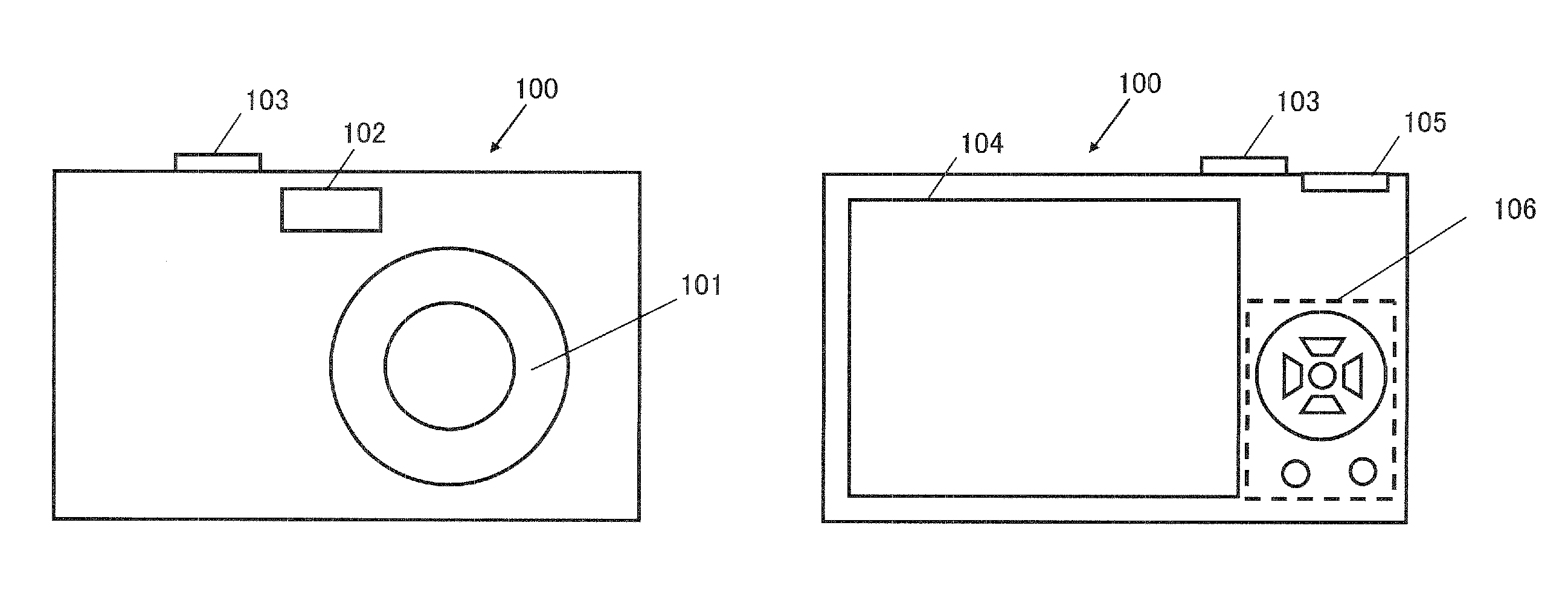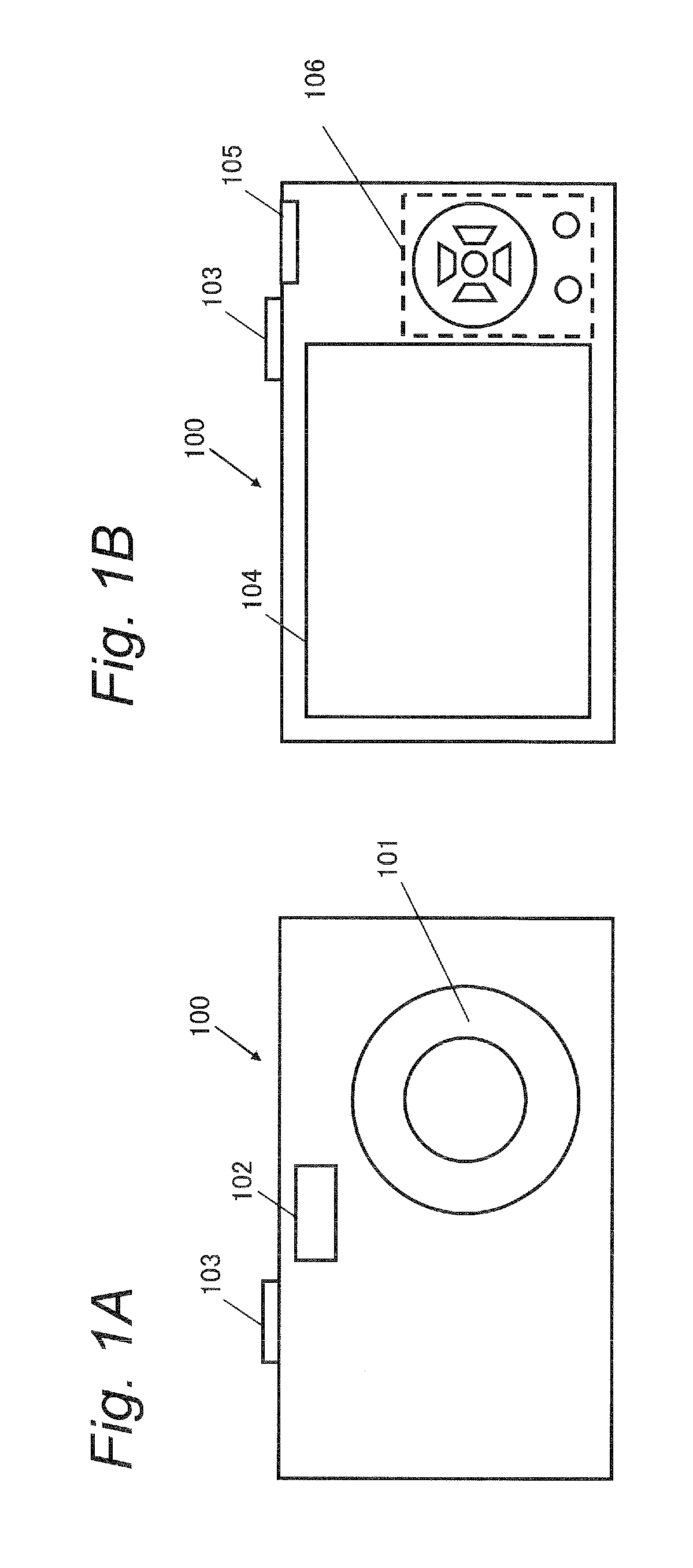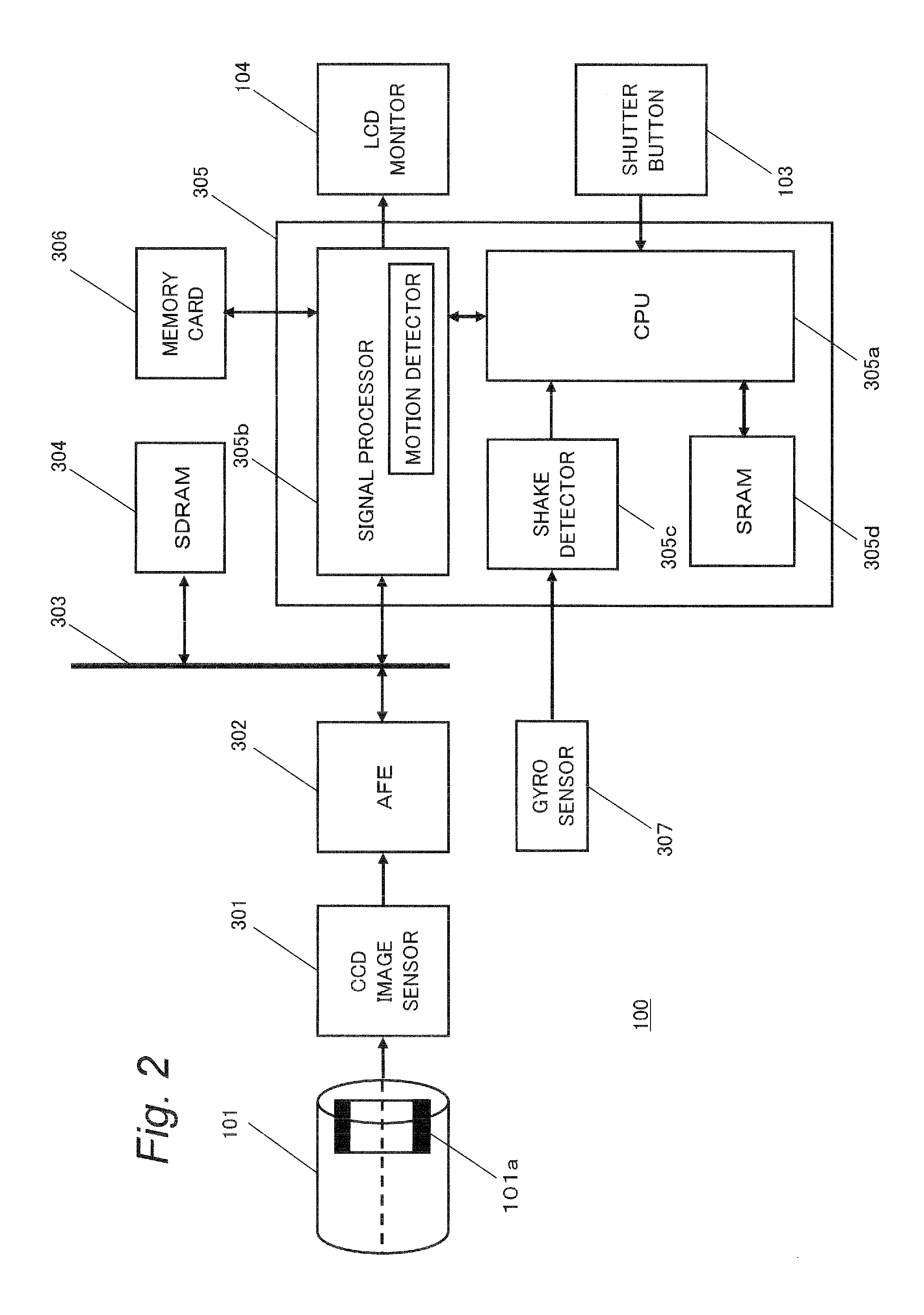Imaging apparatus
a technology of imaging apparatus and capturing interval, which is applied in the field of imaging apparatus, can solve the problems of not being able to predict the speed of the subject, the continuous shooting speed becomes enormously slow, and users may occasionally miss the best shots, etc., and achieves the reduction of the miss of the best shot, and the capturing interval is further extended.
- Summary
- Abstract
- Description
- Claims
- Application Information
AI Technical Summary
Benefits of technology
Problems solved by technology
Method used
Image
Examples
first embodiment
1. External Appearance of Digital Still Camera
[0031]FIGS. 1A and 1B are external views illustrating a digital still camera according to the first embodiment. FIG. 1A is a front view, and FIG. 1B is a rear view.
[0032]An imaging optical system 101 and a flash 102 are arranged on a front surface of a digital still camera 100 (see FIG. 1A). The imaging optical system 101 images a subject image on an imaging device in the digital still camera 100. The flash 102 emits flash light to compensate for deficiency of a light amount required for capturing an image in a dark environment. A shutter button 103 is arranged on an upper surface of the digital camera 100. When the shutter button 103 is pressed down, image data based on a subject image imaged on the imaging device is recorded in a recording medium such as a memory card.
[0033]A liquid crystal display (LCD) monitor 104, a mode dial 105, and various operation buttons 106 are arranged on a rear surface of the digital still camera 100 (see F...
second embodiment
[0092]Basic configuration of the digital still camera according to a second embodiment is the same as that of the first embodiment. In the second embodiment, the imaging optical system 101 includes a zoom lens capable of moving forward and backward along an optical axis. By the zoom lens moving forward and backward in the optical axis, a focal distance of the imaging optical system 101 can be changed. In this point, the second embodiment is different from the first embodiment.
[0093]The digital still camera according to the second embodiment normalizes the change in the continuous shooting interval based on the panning speed (the motion amount of the camerawork) according to the focal distance of the imaging optical system 101. This point will be described in more detail below. The focal distance described below is a focal distance equivalent to that of a film camera of 35 mm.
[0094]The gyro sensor 307 outputs angular velocity of the digital still camera 100. Even if the panning is ca...
PUM
 Login to View More
Login to View More Abstract
Description
Claims
Application Information
 Login to View More
Login to View More - R&D
- Intellectual Property
- Life Sciences
- Materials
- Tech Scout
- Unparalleled Data Quality
- Higher Quality Content
- 60% Fewer Hallucinations
Browse by: Latest US Patents, China's latest patents, Technical Efficacy Thesaurus, Application Domain, Technology Topic, Popular Technical Reports.
© 2025 PatSnap. All rights reserved.Legal|Privacy policy|Modern Slavery Act Transparency Statement|Sitemap|About US| Contact US: help@patsnap.com



